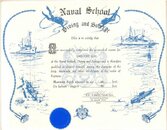The most famous ScubaBoard example of a deep bounce dive on air took place several years ago in Cozumel. An experienced dive shop owner, one of her divemasters, and a good friend planned a bounce dive to 300 feet on air.
This is a not entirely uncommon story in Cayman. Every few years it seems some young and dumb instructor will go to the wall and try to bounce to 300 feet. Some come back, and some don't.
I'll tell a story not because it reflects well on anyone, but at least it has a happy ending.
I started diving at aged 9 (with my Dad) and got certified at 12. Living in the Caribbean I dived frequently, and by the time I was 15 I was by most measures a fairly experienced diver. Although like most 15 year olds, I was dumb as a bag of hammers in the ways of the world. Anyhow, when I did my AOW (which you could only do once you were 15 in those days) my instructor decides that I am going to experience narcosis I am going to experience it *properly*, and so we go to 180 feet (on single tanks, obviously). Being 15 of course I thought this was the greatest thing ever, and I was puffed up like a peacock. My recollections of that dive are still pretty vivid. First thing I noticed was that trying to breathe through my Sherwood Brut was like sucking glue from about 150 feet. When we got to 180 feet I discovered that bizarrely someone had written Egyptian hieroglyphs all over the sea floor. Well naturally I stopped to try read them. Then, with a bit of bad luck, my inflator got stuck to open when I was adjusting my bouyancy. I say bad luck, but that kind of panicked me, and snapped me into a bit more sense. I disconnected my inflator, swam to my instructor and kept about eight feet above him (where the narc was noticeably less, although still chronic tunnel vision). After 5 minutes we ascended as planned. We did a 5 minute deco stop as per the US Navy tables and then got out of the water. On the boat it occurred to me that I didn't check my pressure gauge once during the dive.
As an adult I have been back to 180 feet a few times on air, but now I do it with a twinset and deco gas. As an adult (and as a result of many drunken years in college) I am much better equipped to deal with narcosis, but I know enough to know that I still am pretty shaky below about 165 feet.






